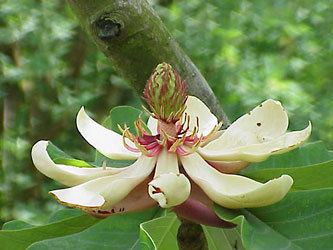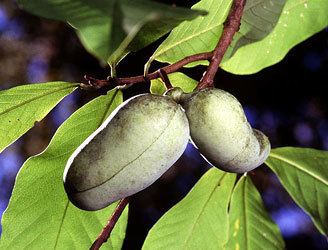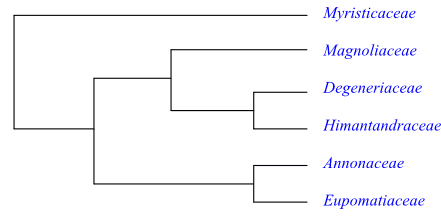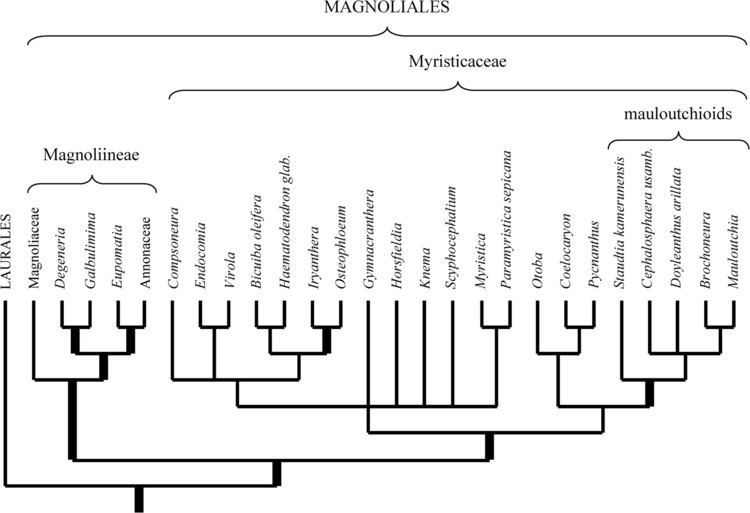Clade Magnoliids | Clade Angiosperms Scientific name Magnoliales Rank Order | |
 | ||
Lower classifications | ||
The Magnoliales comprise an order of flowering plants.
Contents
Classification
The Magnoliales include six families:

APG system

The APG system (1998), APG II system (2003), and APG III system (2009) place this order in the clade magnoliids, circumscribed as follows:
In these systems, published by the APG, the Magnoliales are a basal group, excluded from the eudicots.
Earlier systems

The Cronquist system (1981) placed the order in the subclass Magnoliidae of class Magnoliopsida (=dicotyledons) and used this circumscription:

The Thorne system (1992) placed the order in superorder Magnolianae, subclass Magnoliidae (= dicotyledons), in the class Magnoliopsida (= angiosperms) and used this circumscription (including the plants placed in order Laurales and Piperales by other systems):

The Engler system, in its update of 1964, placed the order in subclassis Archychlamydeae in class Dicotyledoneae (=dicotyledons) and used this circumscription:
The Wettstein system, latest version published in 1935, did not use this name although it had an order with a similar circumscription with the name Polycarpicae. This was placed in the Dialypetalae in subclass Choripetalae of class Dicotyledones. (See also Sympetalae).
From the above it will be clear that the plants included in this order by APG have always been seen as related. They have always been placed in the order Magnoliales (or a predecessor). The difference is that earlier systems have also included other plants, which have been moved to neighbouring orders (in the magnoliids) by APG.
